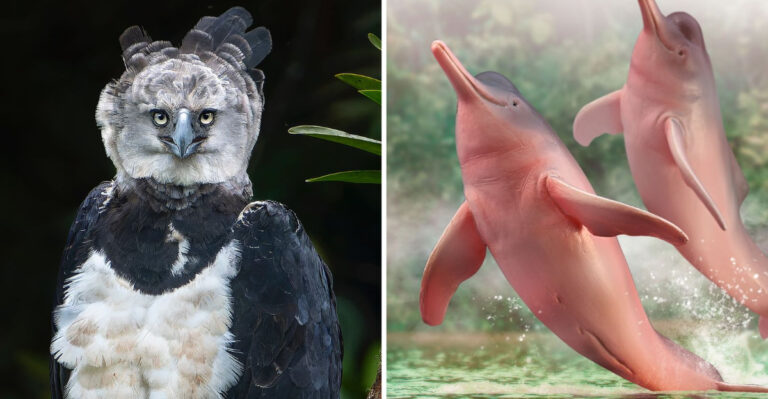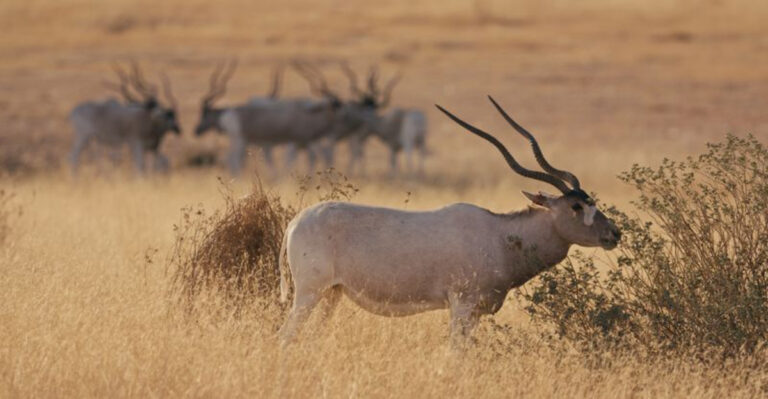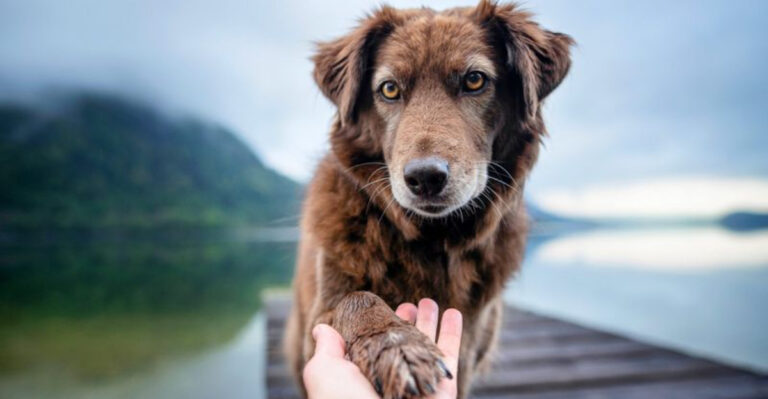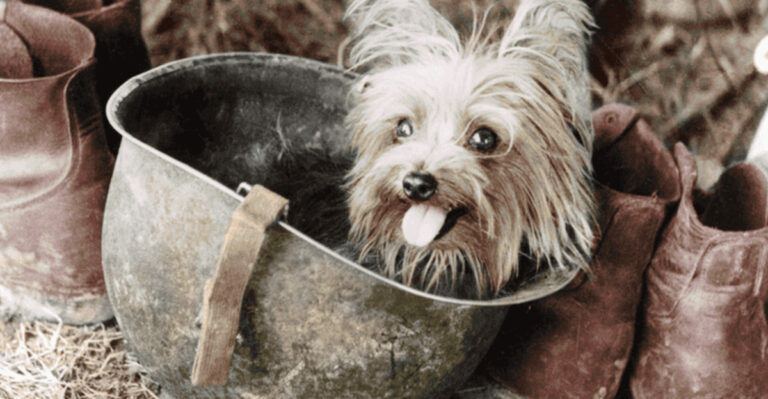19 Things About Raccoons Every American Should Know
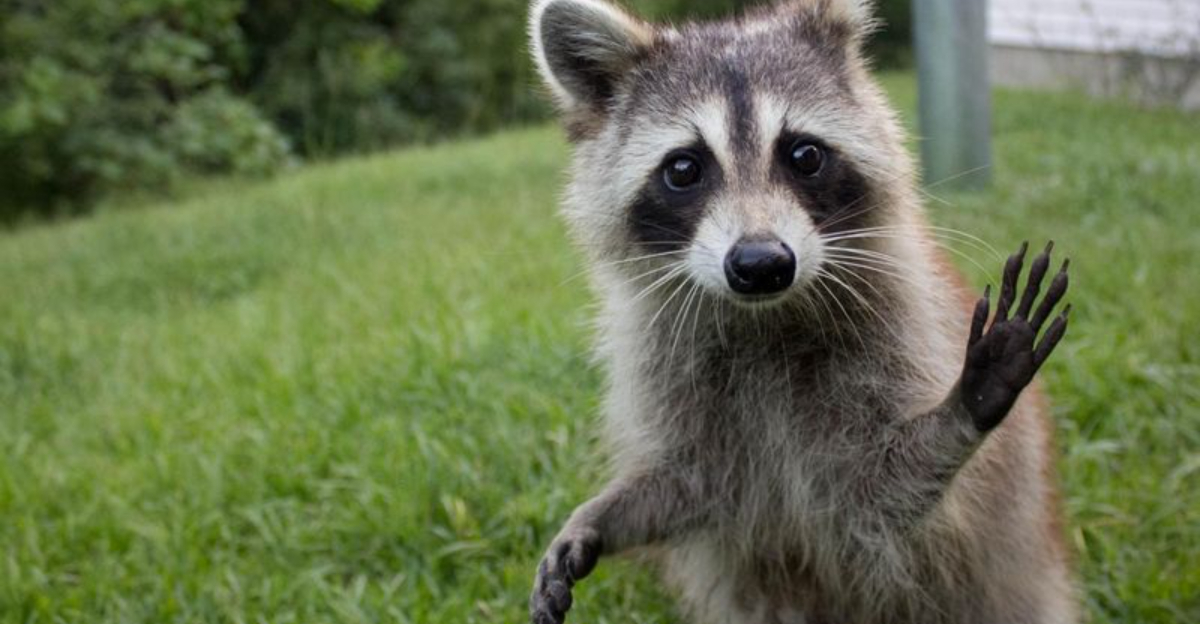
Raccoons are fascinating creatures that capture the curiosity of many Americans. Known for their distinctive black masks and ringed tails, these nocturnal mammals are often spotted rummaging through trash cans or scurrying through suburban neighborhoods.
Despite their ubiquity, there’s a lot more to these furry bandits than meets the eye. Today, we’ll explore some intriguing aspects of raccoons that will give you a deeper understanding of these intelligent and adaptable animals.
1. Raccoons’ Unique Hands
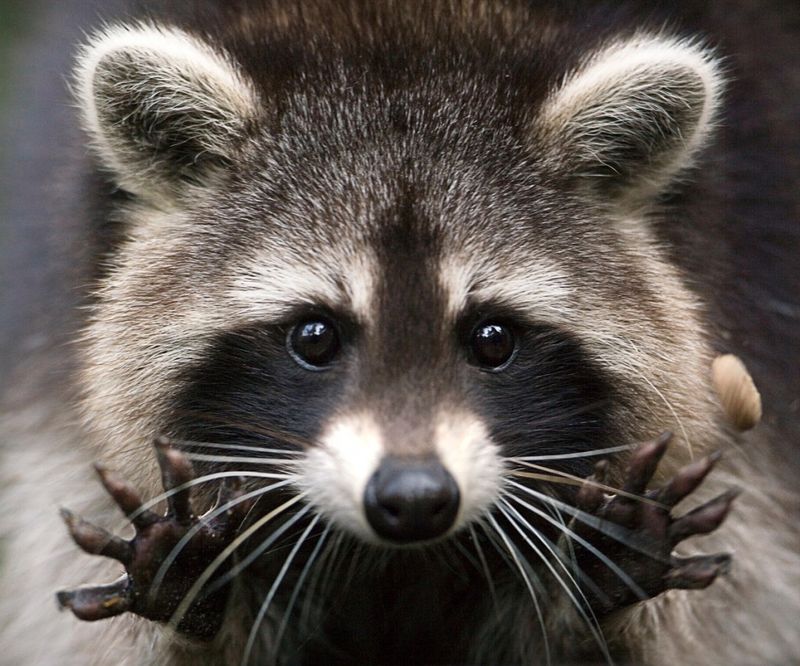
Raccoons are known for their exceptional manual dexterity, which sets them apart from many other mammals. Their front paws have sensitive, finger-like digits, which they use to manipulate objects and open containers.
This ability to grasp and handle items is a significant reason why raccoons are often found in urban areas, as they can easily access food sources. Their tactile sensitivity is comparable to that of primates, allowing them to feel and explore their environment with precision.
Raccoons often dip their hands in water before handling food, a behavior thought to enhance their tactile perception—a phenomenon known as “dousing.” This activity is not about washing the food but rather heightening their sense of touch.
This dexterity extends to their climbing skills as well. Raccoons can scale trees with ease, using their paws to grip branches securely. This climbing ability helps them escape predators and access a variety of habitats, making them one of the most adaptable mammals in North America.
2. Raccoons’ Nighttime Habits
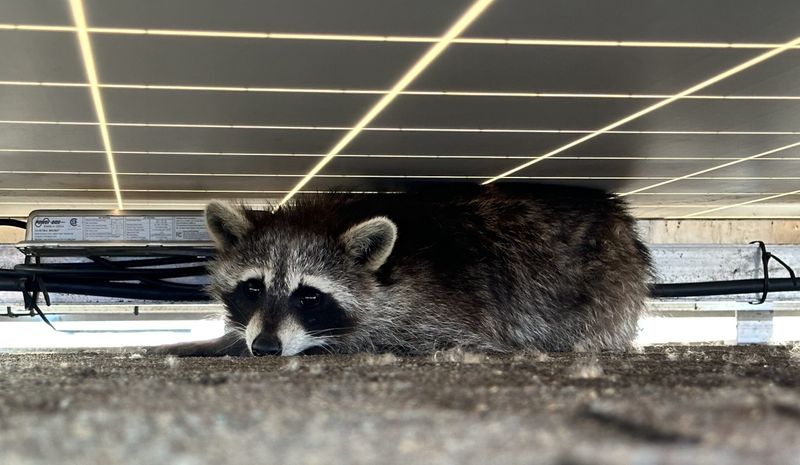
Raccoons are nocturnal creatures, meaning they are most active during the night. This nocturnal lifestyle helps them avoid predators and take advantage of the quiet, dark hours to forage for food.
In suburban areas, raccoons often become a common sight under the moonlight, rummaging through garbage cans in search of a meal. Their large, dark eyes are adapted for low-light conditions, allowing them to see well in the dark.
They also have an acute sense of smell, which aids in locating food sources from afar. This combination of night vision and olfactory prowess makes them efficient nighttime foragers.
Despite their nocturnal nature, raccoons can sometimes be seen during the day, particularly in areas where food is abundant or if they are disturbed.
However, seeing a raccoon in daylight isn’t always a sign of rabies, as commonly believed, but rather a response to environmental factors. Their nighttime habits are a crucial aspect of their survival strategy, enabling them to thrive in diverse environments.
3. Raccoons’ Diet Versatility
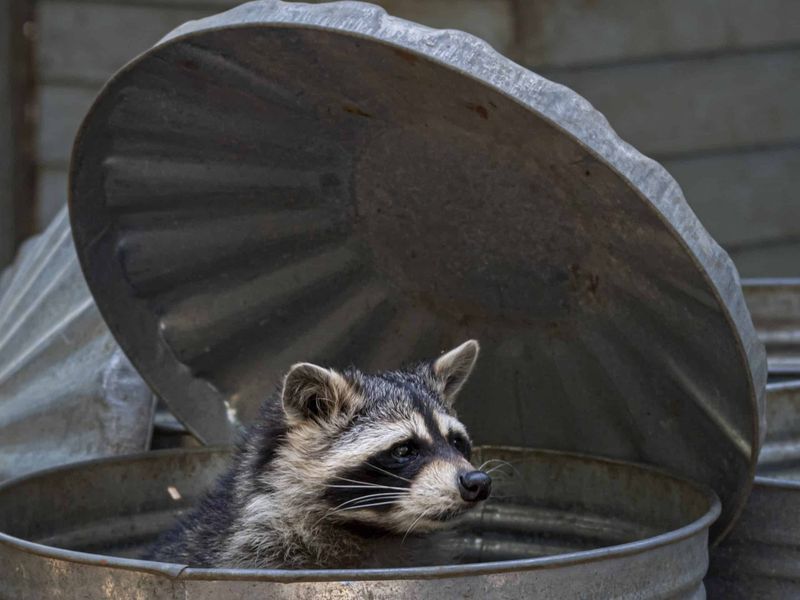
Raccoons are omnivorous animals with a highly varied diet, which contributes to their adaptability and survival in different environments. They eat anything from fruits, nuts, and seeds to insects, small mammals, and even discarded human food.
This dietary flexibility allows raccoons to thrive in both wild and urban settings. In natural habitats, raccoons forage for seasonal foods like berries in the summer and nuts in the fall.
Near water bodies, they hunt for aquatic creatures such as crayfish and frogs, showcasing their opportunistic feeding habits. This ability to exploit a wide range of food sources makes them highly resilient against food scarcity.
In urban areas, raccoons are notorious for raiding trash cans and compost bins. Their intelligence and dexterity enable them to open containers and find food that other animals might overlook.
This opportunistic feeding behavior often brings them into conflict with humans, but it also highlights their remarkable adaptability. Understanding their diet can provide insights into how raccoons manage to survive and even thrive in diverse settings.
4. Raccoons’ Communication Skills
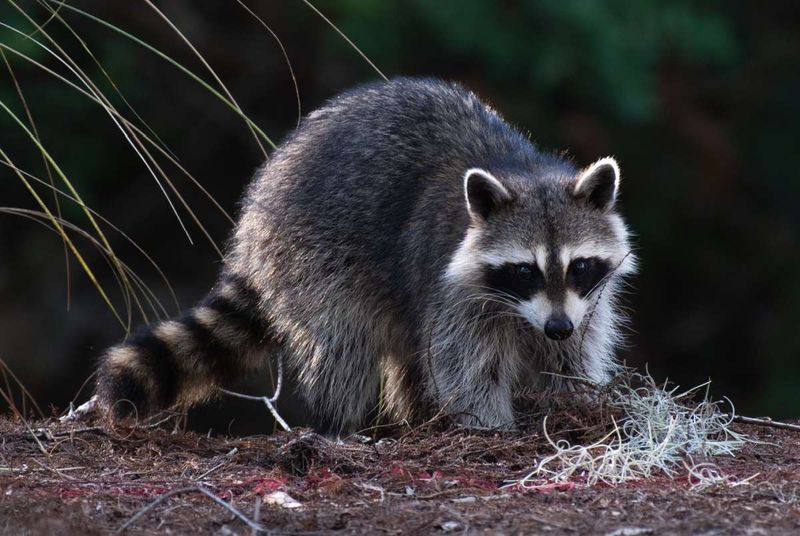
Raccoons have a complex system of communication that involves a variety of vocalizations and physical gestures. They are known to produce over 50 different sounds, ranging from purrs and growls to chirps and whistles.
These sounds serve various purposes, such as warning others of danger, expressing distress, or signaling food availability. In addition to vocal sounds, raccoons use body language to communicate. Tail movements, facial expressions, and touching are common ways they interact with each other.
For instance, a raccoon may raise its tail as a sign of alertness or aggression, while grooming can signify bonding and social structure.
This intricate communication system is vital for their social interactions and survival. It helps them coordinate group activities, establish territories, and maintain social bonds.
Understanding raccoons’ communication methods gives us a glimpse into their social lives and highlights their intelligence and adaptability in interacting with both their environment and each other.
5. Raccoons’ Masked Appearance
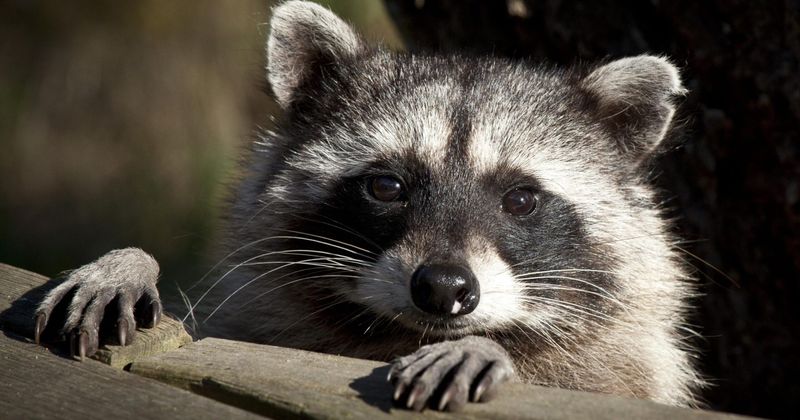
One of the most recognizable features of raccoons is their distinctive black facial mask. This iconic marking not only gives them a bandit-like appearance but also serves practical purposes.
The dark fur around their eyes reduces glare and enhances their night vision, which is crucial for their nocturnal lifestyle. The mask also plays a role in communication. It accentuates their facial expressions, making it easier for raccoons to read each other’s emotions and intentions.
This visual communication complements their vocalizations and gestures, enhancing their social interactions. In addition to the mask, raccoons are known for their bushy, ringed tails. These tails are not just for show; they help with balance when climbing and navigating their environment.
The combination of the mask and tail contributes to the raccoon’s distinctive appearance and aids in various aspects of their survival, from foraging to socializing. Learning about these features helps us appreciate the raccoon’s unique adaptations and their role in nature.
6. Raccoons’ Urban Adaptation
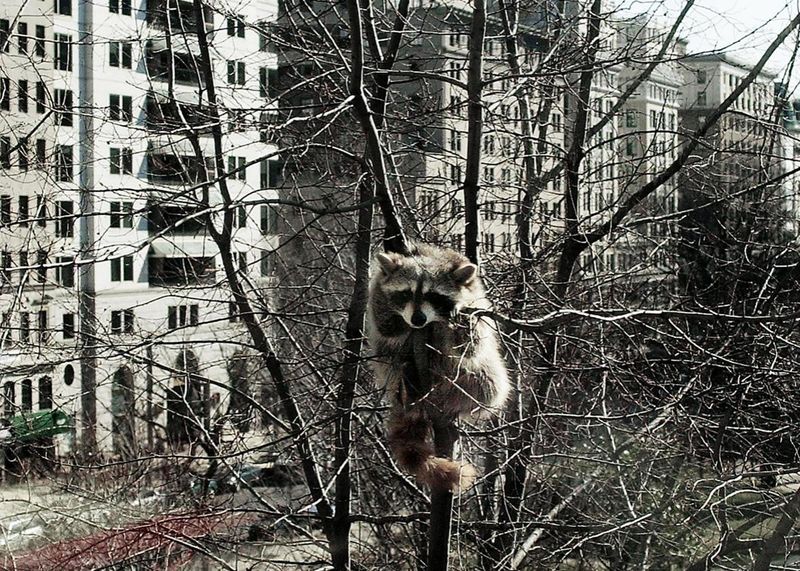
Raccoons have become synonymous with urban environments, showcasing their incredible adaptability. Their ability to live in cities is a testament to their intelligence and resourcefulness.
Urban areas provide raccoons with abundant food sources, such as garbage cans, pet food left outdoors, and various edible plants. Their adaptability is further highlighted by their ability to navigate human-modified landscapes.
Raccoons can climb fences, open doors, and even figure out latches on containers, making them successful survivors in cities. This resourcefulness often leads to conflicts with humans, as raccoons can cause damage to property in their search for food.
Despite these challenges, raccoons play a role in the urban ecosystem by helping control pest populations. Their presence in cities reflects a broader trend of wildlife adapting to human expansion, and it prompts discussions about coexistence and wildlife management.
7. Raccoons’ Intelligence
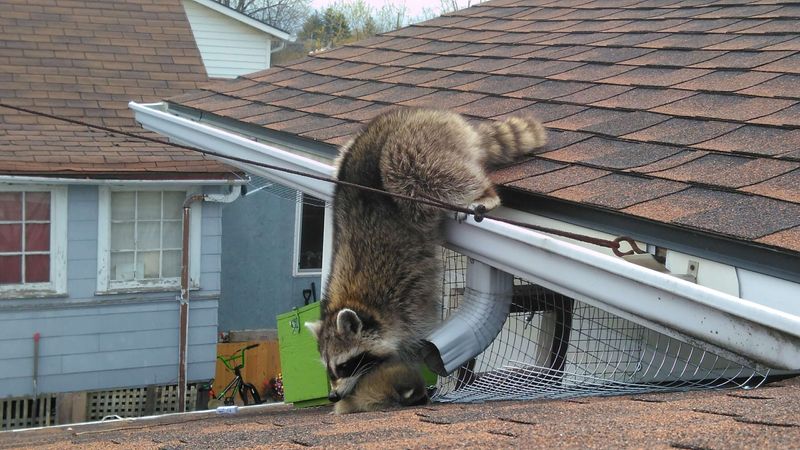
Raccoons are renowned for their intelligence, often compared to that of primates. Their cognitive abilities enable them to solve problems, learn from experiences, and adapt to new situations.
Studies have shown that raccoons can remember solutions to tasks for years, demonstrating impressive memory skills. This intelligence is evident in their foraging behavior.
Raccoons are known to remember the locations of food sources and devise strategies to access them, even if it means overcoming obstacles like locks or barriers. Their problem-solving skills are continually tested as they navigate complex urban environments.
In addition to foraging, raccoons exhibit social intelligence. They communicate using a variety of vocalizations and gestures, which requires understanding and interpreting social cues.
This high level of intelligence not only aids in survival but also highlights the complexity of their interactions with both their environment and each other. Recognizing raccoons’ intelligence allows us to better appreciate their adaptability and role in both natural and urban ecosystems.
8. Raccoons’ Climbing Abilities

Raccoons are skilled climbers, a trait that significantly contributes to their survival. Their climbing abilities allow them to escape predators, find food, and explore various habitats.
Equipped with strong claws and flexible limbs, raccoons can ascend trees with remarkable agility. This climbing prowess is not limited to natural settings. In urban environments, raccoons can scale fences, buildings, and even utility poles.
Their ability to navigate vertical spaces enables them to access rooftops and attics, where they sometimes seek shelter or food. The combination of physical strength and dexterity makes raccoons versatile in their movements.
Their climbing skills are a testament to their adaptability and resourcefulness, allowing them to thrive in diverse environments. Understanding this aspect of raccoons’ behavior highlights their role as opportunistic survivors, capable of exploiting both natural and human-modified landscapes.
9. Raccoons’ Sense of Touch
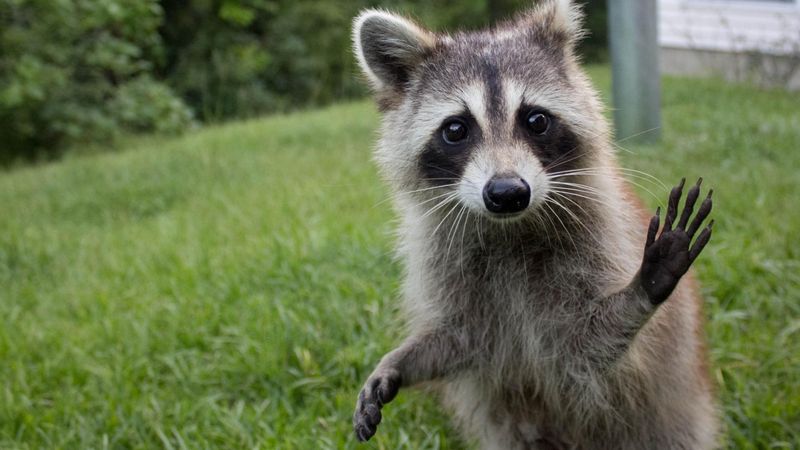
Raccoons possess a highly developed sense of touch, particularly in their front paws. This tactile sensitivity is one of their most important sensory tools, allowing them to explore and interact with their environment effectively.
The pads on their paws contain numerous nerve endings, providing them with detailed information about objects they handle. This keen sense of touch is crucial for foraging. Raccoons often “douse” their food by wetting their paws, which is believed to enhance their tactile perception.
This behavior is not about cleaning the food but rather about heightening their ability to detect textures and shapes, aiding in the identification of edible items. The raccoon’s reliance on touch is also evident in their problem-solving skills.
They use their paws to manipulate objects, open containers, and even operate simple mechanisms. This tactile intelligence is a key factor in their adaptability and success in various environments, from forests to urban landscapes. Appreciating raccoons’ sense of touch helps us understand their interactions with the world around them.
10. Raccoons’ Social Structure
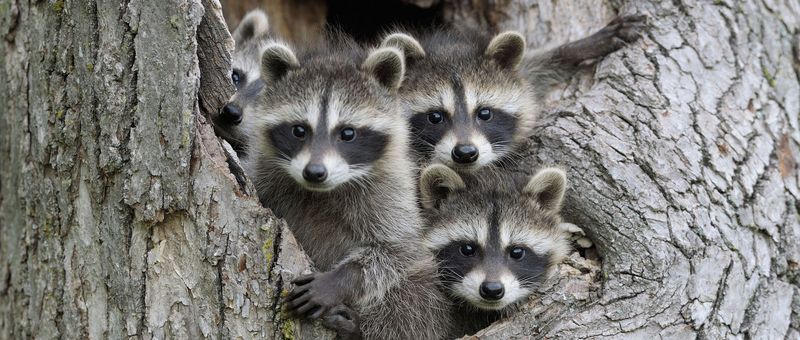
Raccoons exhibit a loosely organized social structure, which is essential for their survival and interaction with each other. While raccoons are generally solitary animals, they often form social groups, especially females with their young.
These groups help provide protection and facilitate learning among younger raccoons. Female raccoons, known as sows, are particularly social during the breeding season. They may share dens with other females and their offspring, creating communal living arrangements.
These social interactions are crucial for raising young raccoons, known as kits, as they learn vital survival skills from their mothers and other group members. Male raccoons, or boars, tend to be more solitary, though they may form loose associations with other males.
These interactions are often based on mutual benefit rather than long-term bonding. Understanding raccoons’ social structure provides insight into their behavioral ecology and highlights their adaptability in various environments, where social strategies might differ based on resource availability and environmental pressures.
11. Raccoons’ Unique Vocalizations
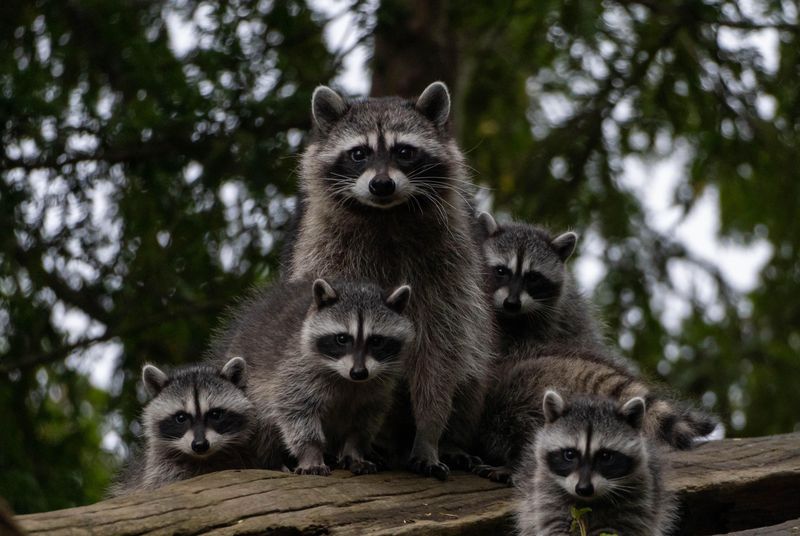
Raccoons are known for their unique vocalizations, which play a significant role in their communication system. These sounds range from purrs and growls to more complex chirps and whistles, reflecting a rich vocal repertoire.
Each type of vocalization serves a specific purpose, such as alerting others to danger, attracting mates, or coordinating social interactions. One of the most fascinating aspects of raccoons’ vocalizations is their ability to convey complex messages.
For instance, mother raccoons use specific sounds to communicate with their kits, guiding them and ensuring their safety. These vocal exchanges are crucial for the development of young raccoons, helping them learn about their environment and social norms.
The diversity of raccoons’ vocalizations is a testament to their intelligence and social complexity. It highlights their adaptability and ability to thrive in various environments by maintaining effective communication.
12. Raccoons’ Denning Behavior
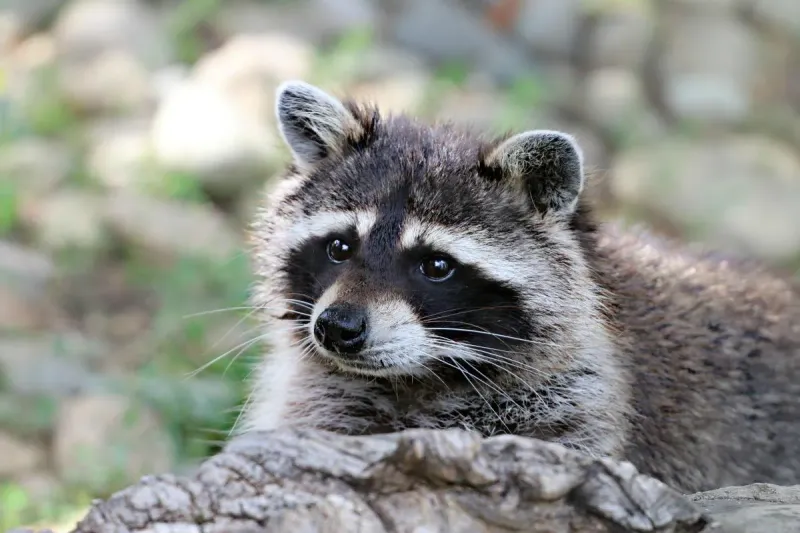
Raccoons exhibit fascinating denning behavior, which is crucial for their survival and reproduction. They are highly adaptable in choosing their den sites, utilizing a variety of natural and artificial structures such as tree hollows, burrows, attics, and abandoned buildings.
This flexibility allows them to thrive in diverse environments, from rural forests to urban landscapes. Dens serve multiple purposes for raccoons, providing shelter from harsh weather and predators.
During the colder months, raccoons may enter a state of torpor, reducing their metabolic rate and conserving energy within the safety of their den. This behavior is particularly important in northern climates, where winters can be harsh.
Breeding season sees female raccoons, or sows, selecting secure dens to raise their young. These dens become nurseries where the kits are cared for and taught essential survival skills.
13. Raccoons’ Problem-Solving Skills
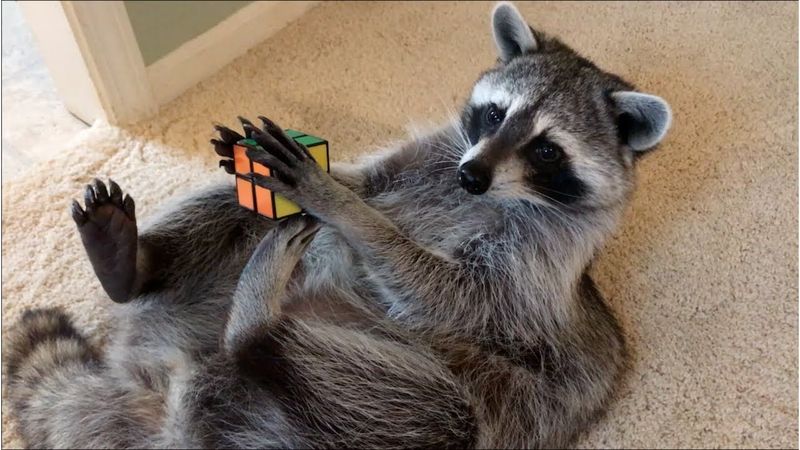
Raccoons are renowned for their problem-solving skills, a testament to their intelligence and adaptability. This capability is particularly evident in their foraging behavior, where they constantly face challenges in accessing food.
Whether it’s unlatching containers or navigating obstacles, raccoons exhibit remarkable creativity and persistence. Research has demonstrated their ability to learn and remember solutions to complex problems, often after just one successful attempt.
This learning capability ensures that raccoons can efficiently exploit new food sources and adapt to changing environments. Their problem-solving skills are not just limited to obtaining food; they also apply to navigating urban landscapes and avoiding potential threats.
In addition to individual problem-solving, raccoons sometimes engage in cooperative behaviors, especially when foraging in groups. This social aspect of their problem-solving abilities highlights their cognitive complexity and social intelligence.
Appreciating raccoons’ problem-solving skills underscores their role as adaptable and intelligent members of the ecosystem, capable of thriving in diverse habitats.
14. Raccoons’ Reproductive Cycle
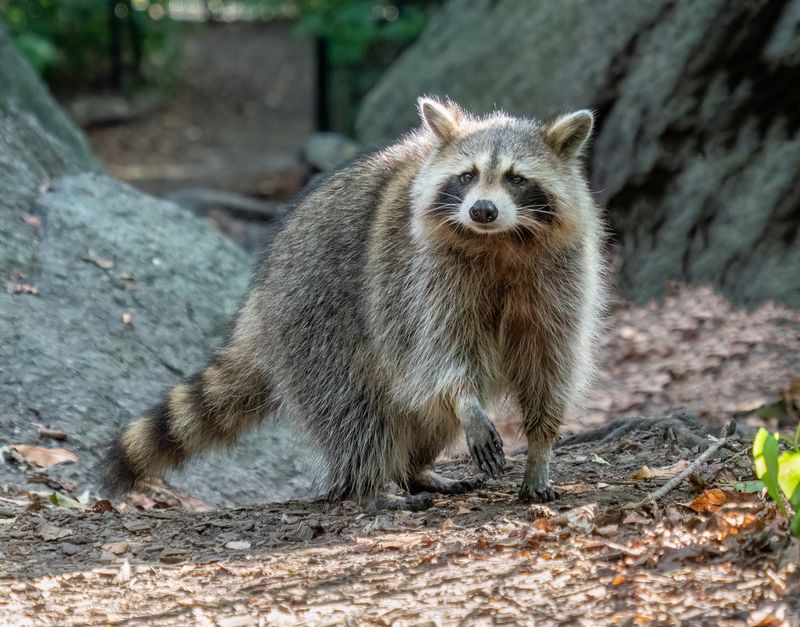
Raccoons have a well-defined reproductive cycle that plays a crucial role in their population dynamics. Breeding season typically occurs from January to March, with female raccoons, known as sows, giving birth between April and June.
The gestation period lasts about 63 days, resulting in the birth of two to five kits per litter. The mother raccoon is solely responsible for rearing the young, as males do not participate in parental care. Sows select secure dens to give birth and raise their kits, which are born blind and helpless.
Over the first few weeks, the kits rely entirely on their mother’s milk and care, gradually developing the skills necessary for survival. By the age of 12 weeks, young raccoons begin venturing outside the den, learning to forage and explore their environment.
This period of learning is crucial, as the kits acquire the skills needed to become independent. Understanding the raccoon reproductive cycle provides insights into their life history and population dynamics, emphasizing the importance of maternal care in their survival and development.
15. Raccoons’ Ecological Impact
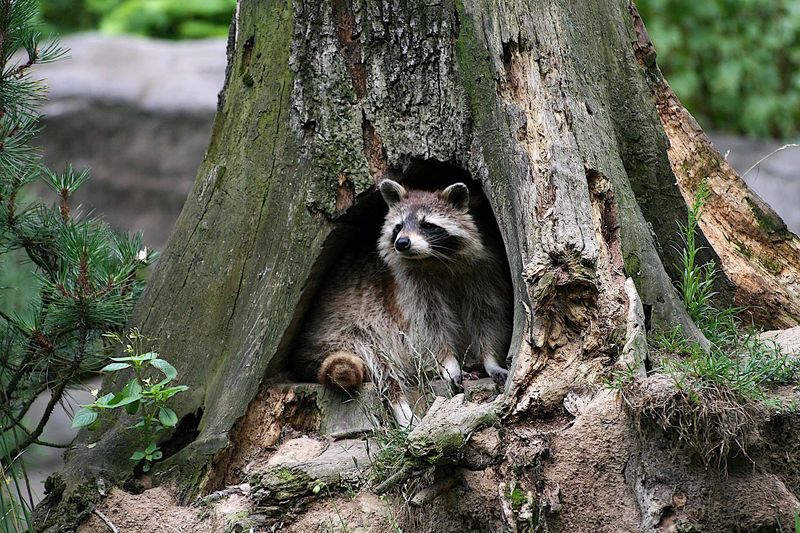
Raccoons play a significant role in their ecosystems, impacting various ecological processes. As omnivores, they help control populations of insects, small mammals, and other prey species, contributing to the balance of local food webs.
Their foraging activities also aid in seed dispersal, promoting plant diversity and regeneration. In addition to their direct interactions with prey and plants, raccoons influence the behavior of other animals.
Their presence can deter certain species, while attracting predators that hunt raccoons, thereby affecting the overall dynamics of the ecosystem. This predator-prey relationship highlights their role in maintaining ecological balance.
Raccoons’ adaptability also means they can influence human-modified environments, such as urban areas, where they interact with waste management systems and contribute to nutrient cycling.
Understanding raccoons’ ecological impact underscores their importance in both natural and urban ecosystems, highlighting their role as key players in maintaining biodiversity and ecological health.
16. Raccoons’ Seasonal Behavior
Raccoons exhibit distinct seasonal behaviors that reflect their adaptability to changing environmental conditions. During spring and summer, they are more active, taking advantage of abundant food resources such as fruits, insects, and small mammals.
This period is also crucial for raising young, as the availability of food supports the energy demands of lactation and care. As autumn approaches, raccoons begin to prepare for the colder months by increasing their food intake and storing fat.
This behavior ensures they have enough energy reserves to survive the winter when food is scarce. In northern regions, raccoons may enter a state of torpor during winter, reducing their metabolic rate and activity levels to conserve energy within their dens.
These seasonal adaptations highlight raccoons’ ability to cope with changing environments and resource availability. Understanding their seasonal behavior provides insights into their ecology and survival strategies, emphasizing their role as adaptable and resilient members of the ecosystem.
17. Raccoons’ Role in Folklore
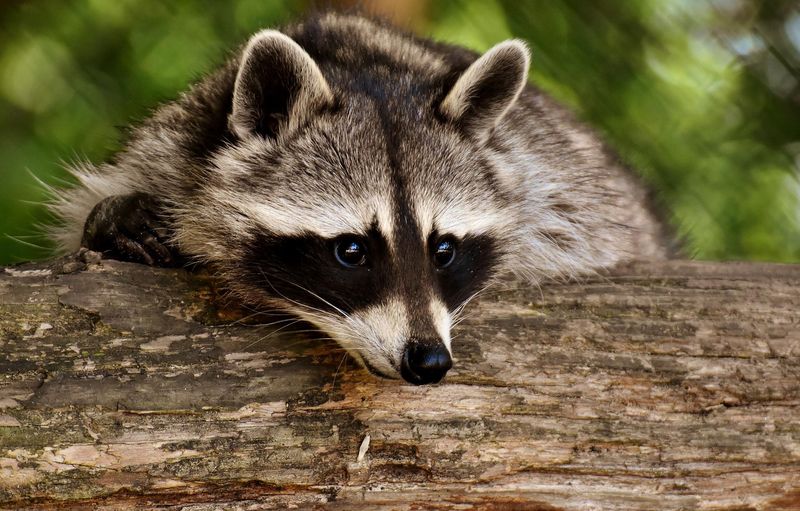
Raccoons hold a special place in folklore and mythology, particularly within Native American cultures. They are often depicted as clever and mischievous creatures, embodying traits of curiosity and adaptability.
These stories reflect the raccoon’s real-life characteristics and their interactions with the environment. In various Native American tales, raccoons are portrayed as tricksters, using their intelligence to outsmart other animals or humans.
These narratives often teach moral lessons or highlight the importance of adaptability and resourcefulness in overcoming challenges. The raccoon’s mask-like facial markings further enhance their image as cunning bandits, reinforcing their role in folklore.
Beyond Native American cultures, raccoons appear in other folklore and popular culture, symbolizing curiosity and wit. These stories and representations contribute to our understanding of raccoons as fascinating and complex animals, deeply embedded in cultural narratives.
Appreciating raccoons’ role in folklore enriches our perception of these animals and their significance in human culture.
18. Raccoons’ Interaction with Humans
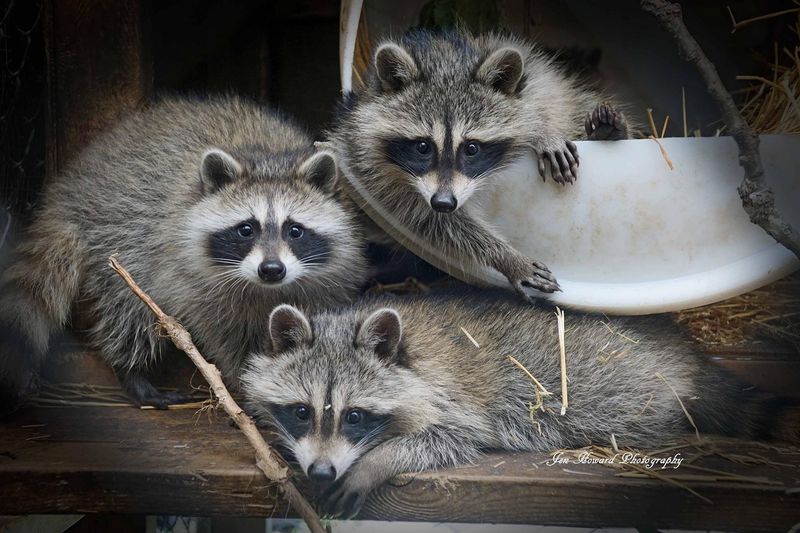
Raccoons have a long history of interaction with humans, often leading to both admiration and conflict. In many urban and suburban areas, raccoons are frequent visitors to backyards and gardens, drawn by the availability of food and shelter.
Their presence can be both entertaining and challenging, as they exhibit behaviors that sometimes lead to property damage or confrontations. Despite these challenges, raccoons also provide opportunities for education and connection with nature.
Observing raccoons in their natural behavior can foster a greater appreciation for wildlife and encourage discussions about coexistence and conservation.
Efforts to manage raccoon populations often involve balancing their ecological roles with human interests, highlighting the complexity of human-wildlife interactions.
Understanding raccoons’ interaction with humans emphasizes the need for coexistence strategies that respect both the animals’ needs and human concerns.
By promoting awareness and understanding, we can navigate the challenges of living alongside raccoons and appreciate their role in our shared environments.
19. Raccoons’ Conservation Status
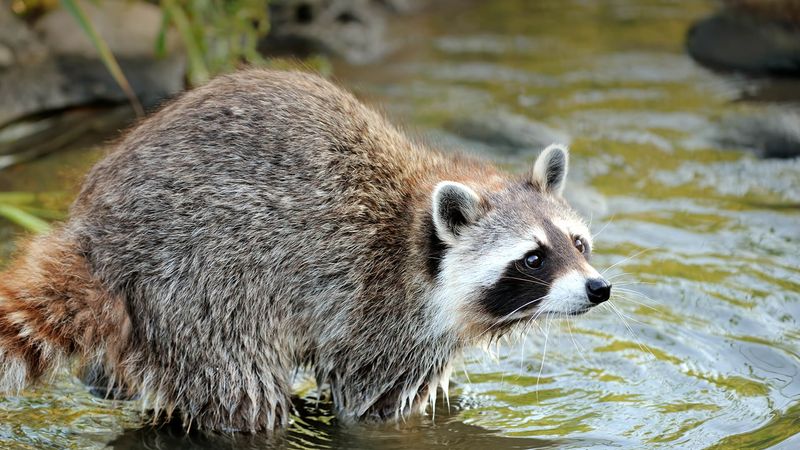
Raccoons are currently classified as a species of “Least Concern” by the International Union for Conservation of Nature (IUCN), reflecting their wide distribution and adaptability.
However, their conservation status can vary regionally, influenced by factors such as habitat loss, urbanization, and human-wildlife conflict. In some areas, raccoons face threats from vehicle collisions, hunting, and trapping, which can impact local populations.
Conservation efforts often focus on managing these threats while maintaining the ecological roles raccoons play in their habitats. Protecting natural habitats and fostering coexistence in urban environments are key strategies in ensuring raccoons’ continued survival.
Public education and awareness campaigns can also play a crucial role in raccoon conservation, promoting understanding and reducing negative perceptions of these animals.
Recognizing raccoons’ conservation status encourages proactive measures to protect them and their habitats, ensuring they remain a vital part of the ecosystems they inhabit.


